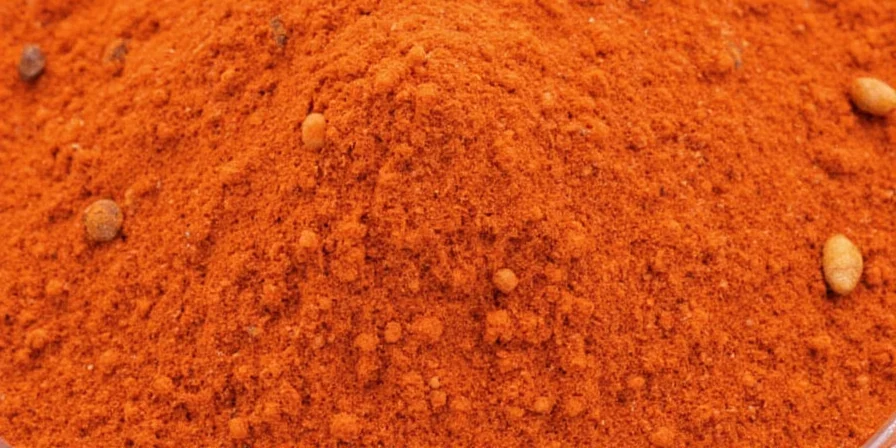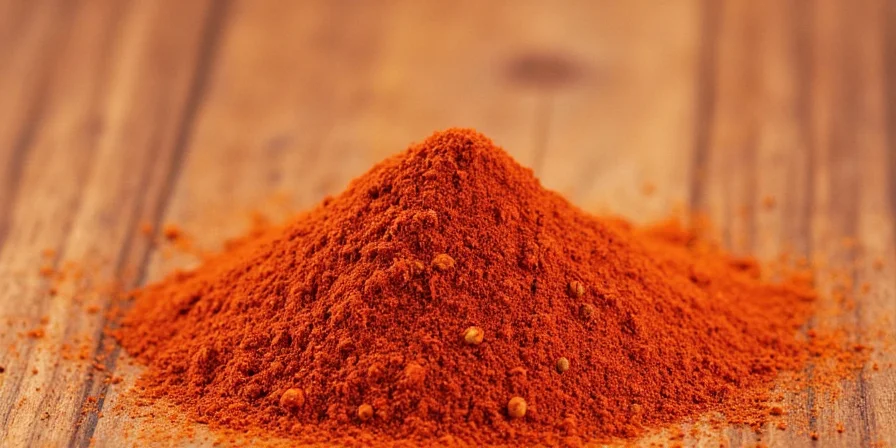Unlocking the Flavor of Smoked Paprika: A Substitute Lover's Guide

Hey spice enthusiasts, flavor explorers, and cooking connoisseurs! If you've ever stood in front of your spice rack, staring at that mysterious red powder labeled 'smoked paprika' and wondered, “What even is this?”, or worse, “What if I run out and need a smoked paprika substitute?”, then you're in the right place. Today, we're diving deep into the world of smoked paprika, its unique flavor profile, and the best substitutes when you're in a pinch. Plus, we'll share some top-tier spice storage and usage hacks that will make your kitchen a flavor-packed paradise.
What Exactly Is Smoked Paprika?
Smoked paprika is a unique spice made from dried and smoked peppers, typically from the Capsicum annuum family. The smoking process imparts a rich, smoky, and slightly sweet flavor that is distinct from regular paprika. It's a cornerstone of Spanish cuisine, commonly used in dishes like chorizo, paella, and sofrito.
There are several types of smoked paprika, each with its own flavor nuances:
- Pimentón de la Vera – The gold standard from Spain, known for its intense smokiness and deep red color.
- Spanish Smoked Paprika – A more accessible version that's still packed with flavor.
- Hungarian Smoked Paprika – Slightly sweeter and more complex, used in goulash and other Eastern European dishes.
Why Would You Need a Smoked Paprika Substitute?
Whether you're out of smoked paprika, on a budget, or just curious about alternatives, knowing a good smoked paprika substitute can be a game-changer. Here's a quick list of common scenarios where you might need one:
- You're cooking a Spanish dish and only have regular paprika on hand.
- You're trying to recreate a recipe but can't find smoked paprika in your local store.
- You're on a low-smoke diet or want to experiment with different spice profiles.
Top Smoked Paprika Substitutes and How They Compare
When choosing a smoked paprika substitute, the goal is to match the smoky, slightly sweet, and earthy flavor of the original. Here’s a breakdown of the best options:
| Substitute | Flavor Profile | Best For | How to Use |
|---|---|---|---|
| Regular Paprika | Mild, sweet, slightly earthy | Soups, stews, sauces | Use in a 1:1 ratio but add a pinch of smoked salt or wood chips for extra smokiness. |
| Chipotle Powder | Smoky, spicy, slightly sweet | Tex-Mex, barbecue, salsas | Mix with regular paprika to balance the heat and add depth. |
| Smoked Salt | Smoky, salty, umami | Meats, vegetables, dressings | Use sparingly to enhance flavor without overpowering. |
| Ground Cumin | Earthy, warm, slightly bitter | Spices, marinades, rubs | Combine with paprika or chili powder for a smoky undertone. |
| Black Pepper | Spicy, sharp, peppery | Meats, gravies, soups | Use in small amounts to add heat and depth. |
Each of these alternatives has its own unique flavor profile, so feel free to mix and match based on your recipe’s needs. Remember, the key is to balance the smokiness and sweetness to match the original smoked paprika.
Spice Storage Hacks: Keep Your Smoked Paprika Fresh
Proper storage is the unsung hero of spice longevity. If your spices are sitting in a humid, hot kitchen, they lose their potency and flavor faster than you can say “flavor explosion.” Here are some of our favorite storage hacks:
1. Cool, Dark, and Dry
Spices should be stored in a cool, dark, and dry place. Avoid storing them in the fridge or freezer unless you're in a very hot climate. Heat and moisture are the two biggest enemies of spice freshness.
2. Airtight Containers
Invest in high-quality airtight containers. Glass jars with tight-sealing lids are ideal. This will keep out moisture, air, and pests. Don’t forget to label your jars with the spice name and date you opened them.
3. Use the Right Containers
Never store spices in the original packaging. Paper or plastic bags are porous and allow air and moisture to seep in. Use opaque glass jars or metal tins for optimal protection.
4. Keep Them Away from Heat Sources
Spices near the stove or oven will absorb heat and lose their flavor. Keep them in a pantry or cabinet that's away from direct heat sources.
5. Use a Spice Drawer or Organizer
If you're the type who loves having every spice at your fingertips, consider using a spice drawer or organizer. This keeps your kitchen tidy and your spices easily accessible.
Maximizing Spice Usage: Tips for Flavor and Longevity
Now that your spices are stored properly, it’s time to make the most of them. Here are some tips for using your spices like a pro:
1. Toast Your Spices Before Use
Many spices, like paprika, cumin, and coriander, can be toasted in a dry skillet before use. This enhances their flavor and aroma. Just be careful not to burn them.
2. Use Fresh Spices
Spices lose their potency over time. Check the date on your spice jars and replace any that are past their prime. A good rule of thumb is to replace your spices every 6 months to a year.
3. Grind Your Own Spices
Pre-ground spices lose their potency faster than whole spices. If you can, grind your spices just before use. This ensures maximum flavor and aroma.
4. Use the Right Amount
It’s easy to overuse spices, especially if you're new to cooking with them. Start with a small amount and adjust to taste. Remember, you can always add more, but you can't take it away.
5. Experiment with Blends
Don’t be afraid to experiment with spice blends. Mix different spices together to create unique flavor profiles. This is especially fun when working with a smoked paprika substitute.
Smoked Paprika Substitute in Action: A Recipe Example
Let’s put our knowledge to the test with a simple recipe that uses a smoked paprika substitute. Here's a quick and easy Spanish-inspired baked chicken recipe:
Spanish-Style Baked Chicken with Smoked Paprika Substitute
Ingredients:
- 4 chicken thighs
- 2 tablespoons of olive oil
- 1 tablespoon of smoked paprika (or a smoked paprika substitute like chipotle powder + 1 tsp regular paprika)
- 1 teaspoon of garlic powder
- 1 teaspoon of smoked salt
- 1/2 teaspoon of black pepper
- 1/2 teaspoon of cumin
- 1/4 cup of chopped fresh parsley
Instructions:
- Preheat your oven to 375°F (190°C).
- In a bowl, mix together the olive oil, smoked paprika (or substitute), garlic powder, smoked salt, black pepper, and cumin.
- Season the chicken thighs with the spice mixture, making sure they’re well coated.
- Place the chicken on a baking sheet lined with parchment paper.
- Bake for 25-30 minutes, or until the chicken is golden and cooked through.
- Top with fresh parsley before serving.
This recipe is a perfect example of how a smoked paprika substitute can enhance the flavor of your dish without compromising the integrity of the recipe. Feel free to tweak the spice blend to suit your taste!
Final Thoughts: Embrace the Spice Journey
Spices are more than just flavor enhancers—they’re a gateway to global flavors, cultural traditions, and culinary creativity. Whether you're using smoked paprika or experimenting with a smoked paprika substitute, the key is to have fun, be curious, and keep learning.
Remember, the best spices are the ones you use regularly, store properly, and enjoy. So go ahead, dust off that spice rack, and let your kitchen come alive with flavor. And if you ever find yourself in need of a smoked paprika substitute, you now have a whole arsenal of options at your fingertips!
Happy cooking, and may your spices always be fresh, your flavors always bold, and your kitchen always full of joy.

Keep exploring, keep experimenting, and keep tasting. The world of spices is a delicious one—and it's waiting for you!










 浙公网安备
33010002000092号
浙公网安备
33010002000092号 浙B2-20120091-4
浙B2-20120091-4